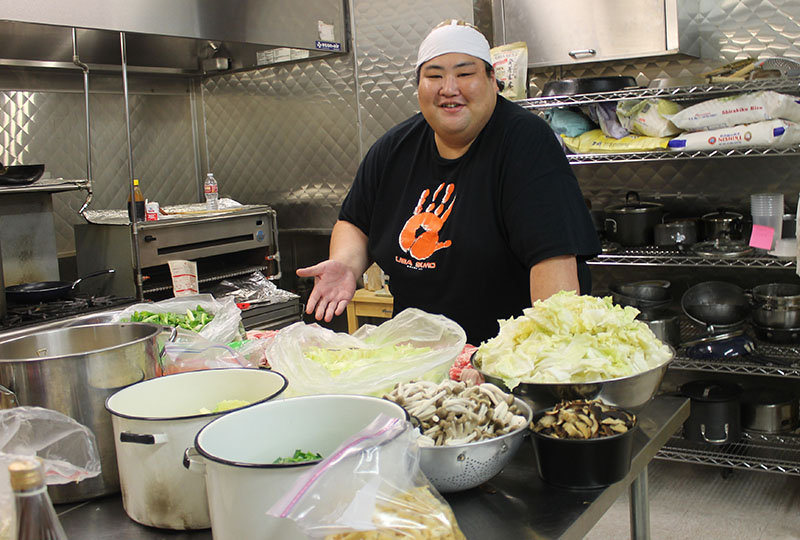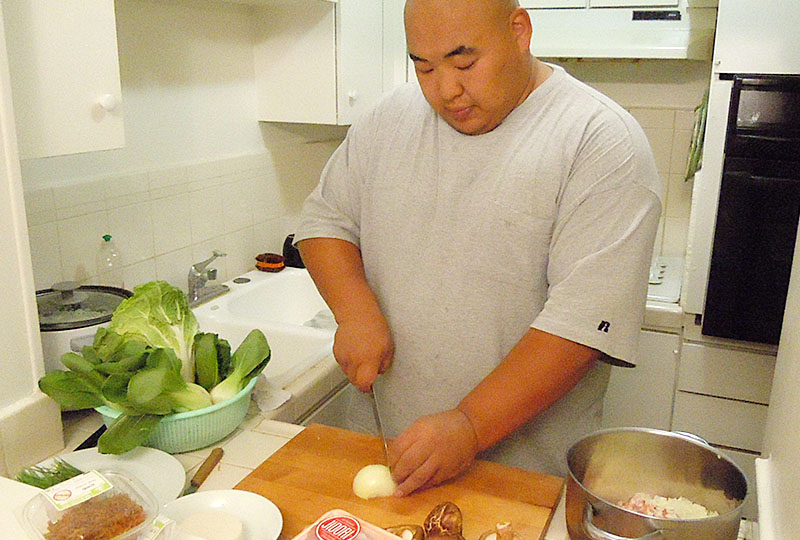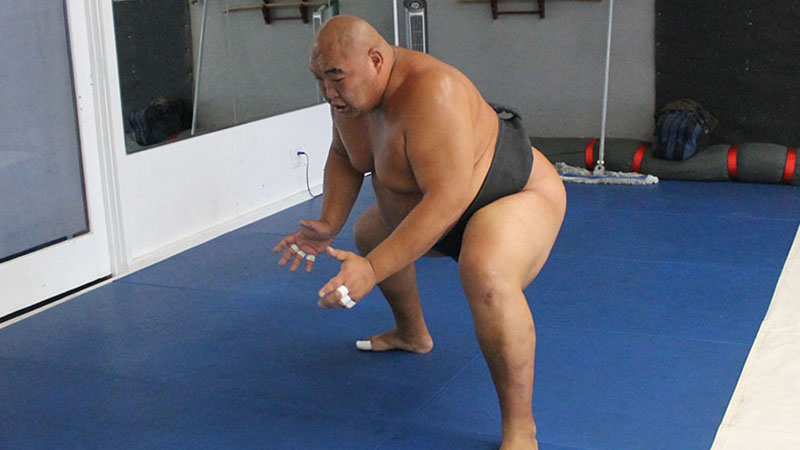SUMO CUISINE – “CHANKO-NABE”
Some people think sumo wrestlers are out of shape and unhealthy, but in fact, most elite sumo wrestlers have immense power, speed, balance, and flexibility, from hours of daily training. They also support their athletic workouts with the traditional Japanese sumo staple of “chanko-nabe” (pronounced “chon-ko-nah-bay”). In fact, muscle-man Byamba (4-time World Champion) keeps healthy. At 350 pounds, his body fat was only 11%!
This sumo stew is teeming with nutrient-dense proteins and vegetables. After intense workouts, pro sumo wrestlers down bowls of chanko, to replenish energy lost from hours of training. The warm broth and fresh vegetables aid in assimilation and absorption of nutrients, and the high protein content is for rebuilding muscles worn down during training. It’s the ultimate centuries-old Japanese workout food — that also tastes great and is healthy for humans of all sizes!
Chanko-nabe dishes consist of a rich broth, flavored with fish stock, miso, soy sauce, or other Japanese condiments. Protein comes from meat, chicken, fish, or tofu. Almost any vegetable works well in chanko-nabe — popular choices including cabbage, onions, green onions, carrots, mushrooms, daikon radish, burdock root, and more! Chanko is always made from very fresh ingredients, and with sumo wrestlers around, there’s no need to worry about leftovers!
In recent decades, Americans have become familiar with sushi, tempura, shabu-shabu, and other delicious Japanese dishes. Right now, not many people here know chanko, but Sumo Champions like Yama and Byamba are pioneering the spread of this nutritious Japanese hotpot. In fact, Yama and Byamba are arguably two of the best chanko chefs in the Western Hemisphere, as they both spent years cooking it daily while in Japanese Pro Sumo. Yum yum ….
SUMO ROUTINE
Before they start eating lunch (their first meal of the day), though, Pro Sumo wrestlers train intensely all morning. This includes plenty of stretching and calisthenics, as well as hundreds of “shiko” (leg lifts), warm-ups, as well as dozens of matches. After several hours of non-stop movement, a sumo wrestler may lose 10 or 15 pounds of sweat!
Most people are surprised by the intensity of the training, and of how muscular, fast, flexible, and powerful most Pro Sumo wrestlers are. The serious training continues the entire year, with few breaks, as the sumo tournaments occur every other month, so there isn’t really an off-season.
The sumo training has developed over centuries into the regimented routine that is observed almost universally in Japanese sumo today. Both the diet and the exercises are specifically designed to improve fitness, overall health, and of course, combat ability. So, believe it or not, sumo training is great for developing all-around fitness!


